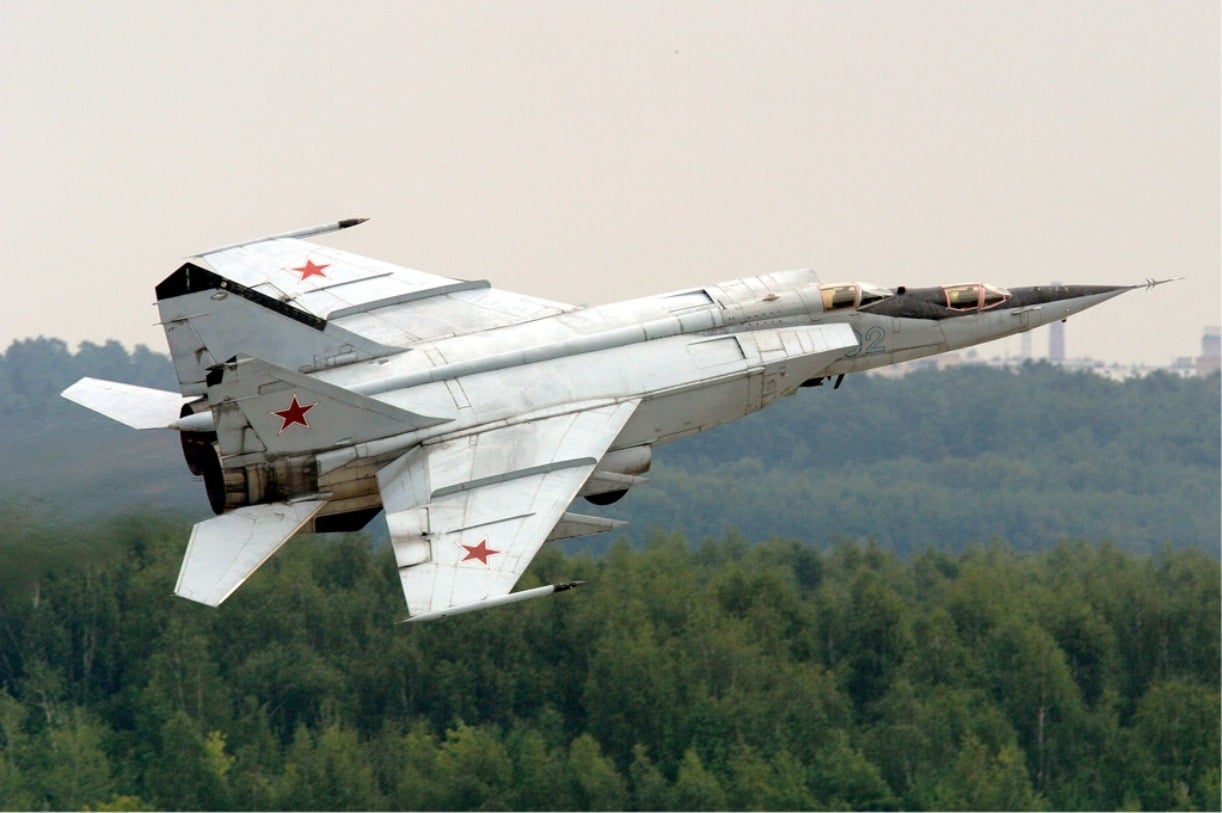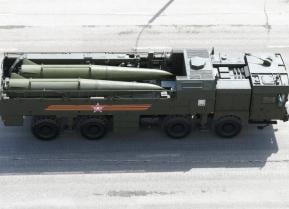MiG-25 Foxbat: Russia's Mach 2.83 Fighter Looks Like a Big Failure
In the late 1960s, the USSR unveiled the MiG-25 "Foxbat," a fighter that seemed poised to dominate the skies with its exceptional speed and altitude capabilities. Designed to counter high-flying U.S. bombers, the Foxbat could achieve Mach 2.83, making it a formidable adversary. However, its operational effectiveness was hampered by design and manufacturing limitations, and it struggled in combat roles beyond high-altitude interception.
Summary: In the late 1960s, the USSR unveiled the MiG-25 "Foxbat," a fighter that seemed poised to dominate the skies with its exceptional speed and altitude capabilities. Designed to counter high-flying U.S. bombers, the Foxbat could achieve Mach 2.83, making it a formidable adversary. However, its operational effectiveness was hampered by design and manufacturing limitations, and it struggled in combat roles beyond high-altitude interception. Despite initial fears, the MiG-25's actual combat performance was lackluster, and its service was mostly limited to recon missions and a few high-speed engagements. The defection of a Foxbat to Japan in 1976 allowed the West to understand its limitations better, leading to its eventual decline in relevance. Today, only a few remain in service, overshadowed by its successor, the MiG-31 Foxhound, and a legacy of what could have been rather than what was.
Meet the MiG-25
In the late 1960s, the USSR debuted what appeared to be the world’s deadliest fighter. The MiG-25 (NATO term “Foxbat”) could outrun any fighter in the air, and indeed any military aircraft other than the SR-71 Blackbird.
Bearing a wicked name, a forbidding profile, and some great stats, the Foxbat looked like a world-beater. Combining exceedingly high speed with high altitude tolerance and a heavy weapons load, it looked as if the plane could contribute effectively on the Central Front while also helping to immunize Soviet airspace from U.S. penetration. Combined with the lessons of third-generation fighters in Vietnam, the existence of the Foxbat helped spur U.S. innovation, pushing the development of the F-15 Eagle.
But the Foxbat never lived up to its billing. Deficiencies in design, manufacturing problems, and the disappearance of key aspects of its mission meant that it could not seriously compete on quality with the best fighters of the age, or on costs with models such as the MiG-21. Despite its stunning performance, the Foxbat has now nearly disappeared from the inventories of the world’s air forces.
Foxbat Inception
The Foxbat sought to answer the Soviet Union’s need to protect its airspace from fast, high-flying U.S. bombers. The most prominent example was the B-58 Hustler, a Mach-2-capable nuclear bomber that entered service in 1960, but on the horizon loomed the B-70 Valkyrie, a futuristic bomber capable of penetrating Soviet airspace at speeds in excess of Mach 3. Armed with long-range missiles, a large radar and powerful engines, the Soviets designed the Foxbat to catch and kill these fast bombers.
The Foxbat entered service in 1970 (the same year the Hustler left service, and eight years after the cancellation of the B-70), with the last aircraft rolling off the production line in 1984. In all, the Soviet Union produced 1,186 Foxbats for foreign and domestic needs, with the overwhelming majority serving in the USSR. The USSR never licensed the Foxbat for foreign production, and the Chinese never cared enough about the aircraft to make a concerted effort to copy it.
Of course, the threat posed by Soviet SAM systems would eventually drive U.S. bombers from high altitude to low altitude, reinvigorating the B-52 Stratofortress and transforming the air defense game. Lacking a look down/shoot down radar (the Soviets wouldn’t develop this capability until the 1980s), the MiG-25 would have struggled to carry out its interception role against such tactics. In reality, most of the Foxbat’s Soviet service would come in pursuit of high-flying recon planes, such as the SR-71.
Capabilities
The MiG-25s capabilities were, and are, eye-popping. It can make Mach 2.83 in sustained flight, and can go over Mach 3 in bursts if no one cares about the destruction of the engines. In interceptor and air-superiority mode, it carries four R-40 air-to-air missiles, with an outer range limit of fifty miles. It can reach an altitude of over sixty-five thousand feet. Foxbats designed for reconnaissance missions carried sophisticated electronic and photographic equipment, and could reach even higher ceilings. A few Foxbats were optimized for high-speed strike roles.
These capabilities terrified Western analysts, who lacked good information on how the Foxbat flew in combat situations. The appearance of the MiG-25 (and its ability to set a variety of speed and altitude records) helped drive decisions in the U.S. tactical fighter program, eventually leading to the F-15 Eagle. After a defector landed a new MiG-25 in Japan in 1976, U.S. engineers developed a better sense of the plane’s characteristics.

What they found was that the Foxbat had troubles. Limitations in Soviet manufacturing techniques made the plane heavier than its Western counterparts. It maneuvered poorly at high speeds, and handled poorly at low altitudes. Its radar was of limited effectiveness in conventional combat situations against enemy fighters, and the handling problems at low altitudes meant that the plane never performed particularly well in that mission. These deficiencies would have been forgivable if the Foxbat had ever conducted its high-altitude interceptor role, but in fact it saw most of its service in far different circumstances.
MiG-25 Foxbat in Combat
In combat the Foxbat had limited success. In 1971, a Soviet Foxbat operating out of Egypt turned on its afterburners and managed to escape several Israeli fighters by flying in excess of Mach 3, although the experience permanently burned out the plane’s engines. In the war over Lebanon, Israeli fighters downed several Syrian Foxbats in a series of engagements. During the Syrian Civil War, the desperate Syrian Arab Air Force has pushed aging Foxbats into ground support roles, in one case using air-to-air missiles to attack ground targets.
Iraq used MiG-25s extensively during the Iran-Iraq War, claiming an uncertain number of Iranian aircraft at equally uncertain cost; the Foxbats reportedly suffered heavily at the hands of Iranian F-14s, while feasting on older aircraft. Iraqi Foxbats claimed both of the last two American aircraft lost in air-to-air combat. In the early days of the Gulf War, a MiG-25 shot down Scott Speicher’s F/A-18 (several other Foxbats were lost to U.S. fighters). In 2002, the USAF set a trap for an Iraqi MiG-25 pilot who had been using the interceptor’s great speed to snipe at U.S. UAVs in the northern no fly zone. Engineers jury rigged an air-to-air missile to a Predator UAV in order to lure the MiG in for a kill. The plan went awry, however, and the MiG destroyed the Predator with an AAM.

Demise
In contrast with its older cousin, the MiG-21, a very limited number of Foxbats remain in service. Most of these fly in the Algerian Air Force and the Syrian Arab Air Force, although some reports have emerged of a MiG-25 returning to service in Libya. Most Foxbats retired shortly after the end of the Soviet Union, with a few serving for a time in successor state air forces. Iraqi MiG-25s were largely destroyed in the Gulf War, with the survivors eliminated in Operation Desert Storm.
In the USSR, the MiG-25 would eventually become the MiG-31 Foxhound, a variant/rebuild that resolved many of the problems with the original, while retaining its key characteristics. The Foxhound does have a look down/shoot down radar, which gives it a fighting chance of tracking and destroying low-flying bombers and cruise missiles.

Designed to shoot down a bomber that never existed, the bugbear of the MiG-25 helped spur development of one of the finest fighters to ever fly. It would provide a template for the MiG-31, which remains in service today with the Russian Air Force, and which will continue to fly for the foreseeable future. But the few remaining MiG-25s operate in situations unimaginable to their designers, and generally with quite limited effectiveness. Built with a specific mission in mind, the Foxbat never proved flexible enough to adapt to different strategic contexts.
About the Author: Dr. Robert Farley
Robert Farley, a frequent contributor to the National Interest, is author of The Battleship Book. He serves as a senior lecturer at the Patterson School of Diplomacy and International Commerce at the University of Kentucky. His work includes military doctrine, national security and maritime affairs. He blogs at Lawyers, Guns and Money, Information Dissemination and the Diplomat.
Image Credit: All Images are Creative Commons.


